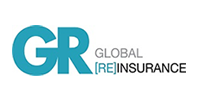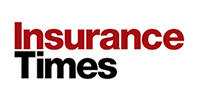Defaqto analyses the range of insurance products for fleet customers and people who take their vehicles abroad
At this time of the year most people are looking forward to their holiday and, with the cheap cost of ferries to the Continent, the car can be used for trips ranging from a one-day 'booze cruise' to a month-long tour across Europe.
Alongside a vehicle maintenance check and obtaining Continental breakdown cover, the motorist must ensure their motor policy provides adequate cover.
All motor policies offer the minimum insurance as required by the laws of compulsory insurance within the EU or countries that have agreed to implement the European Directives.
Full foreign use is not always provided as standard, however. Some insurers make it available only as an optional extension to the policy.
In the following tables, Defaqto uses the resources of its Aequos database to see which policies offer foreign use cover and to what extent.
Where foreign use is provided as a standard cover, most insurers offer a period of free use which is limited to either or both the total number of days taken throughout the policy year or the number of days used for each trip.
When analysing the database, the number of days provided vary widely from provider to provider, but the most common limit to one trip length is 90 days.
Nearly all motor insurance certificates now include appropriate European wording, therefore a 'green card' is not necessarily required, but they are still provided by insurers when the vehicle is taken to a country not normally covered in the foreign-use territorial limits. This usually incurs an additional premium.
Another area of cover provided within foreign-use cover is customs duty.
If the car is lost or damaged abroad, the insured may have to pay customs duty relating to the cost of repairing and importing the vehicle.
This is not always considered when purchasing a policy, but the value of having customs duty cover will surely be realised should a claim arise.
In summary, when choosing a motor insurance policy the prospective insured who takes his car abroad should carefully consider the foreign use cover provided by an insurer before purchasing a product.
Defaqto has also looked at the various levels of cover provided in the standard fleet policies on offer from the major insurers.
Fleet options
What may surprise many readers is the breadth of cover and options available in the various fleet policies, when the main consideration for many customers is the bottom-line price. Most policies offer the usual liability covers at standard levels - third party property damage cover of £20m for private cars. For goods-carrying vehicles (GCV), however, the limit is restricted £5m.
Most insurers cover cross liability, although aggregated limits of indemnity will usually apply. Other covers include contingent liability, unauthorised use and unauthorised movement.
'New-for-old' cover is commonplace on private car vehicles, and this cover is repeated on most fleet policies too, although typically only for cars, and only where the damage exceeds 50%-60% of the list price as new.
A few insurers will provide this cover for goods vehicles too, but may set a weight limit.
For instance, AXA will give new-for-old cover on goods vehicles up to 3.5 tonnes and Allianz Cornhill for goods vehicles up to 7.5 tonnes.
Other benefits which are standard in private car contracts are also included in most fleet contracts, such as cover for loss of keys, audio, personal effects and medical expenses, but there are varying limits. One area of cover where few insurers provide cover is death and personal injury benefits for drivers.
Windscreen cover is provided by most insurers, with a general replacement excess of £50 or £60.
Just over half of the insurers analysed provide cover for European travel as standard in their policy cover, with the others providing European travel as an optional extension.
While there are varying limits to the number of days provided for European travel, most have no overall limits on the number of days allowed outside the UK.
Emergency helplines are provided by nearly all of the insurers analysed and most will provide a recovery service following an accident, at least to the nearest garage.
Recommended repairers are generally used for accident work, with courtesy vehicles usually provided during the period of repair.
Some insurers allow fleet customers to authorise their own repairs, provided they are supplied with a detailed estimate of the work. ULR cover is provided by relatively few of the insurers analysed, either as a standard or optional extension of the policy, with indemnity limits varying between insurers of either £50,000 or £100,000.
There is a wide selection of fleet policies and using product features information will show clients the price should not always be the major factor when selecting an insurer.
Hosted by comedian and actor Tom Allen, 34 Gold, 23 Silver and 22 Bronze awards were handed out across an amazing 34 categories recognising brilliance and innovation right across the breadth of UK general insurance.













































